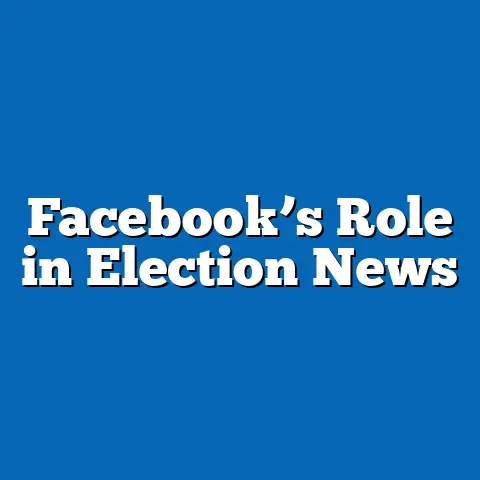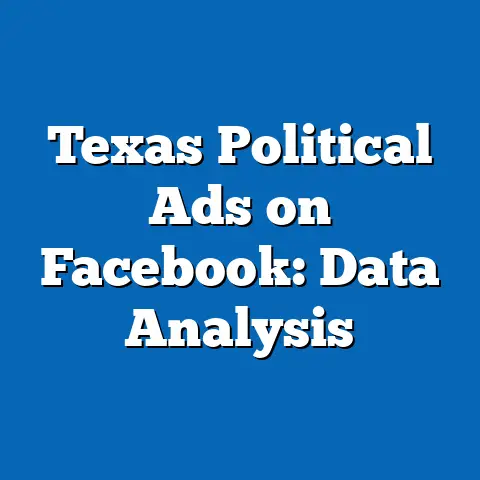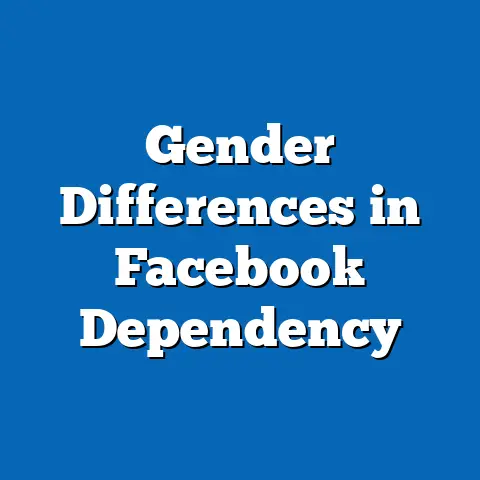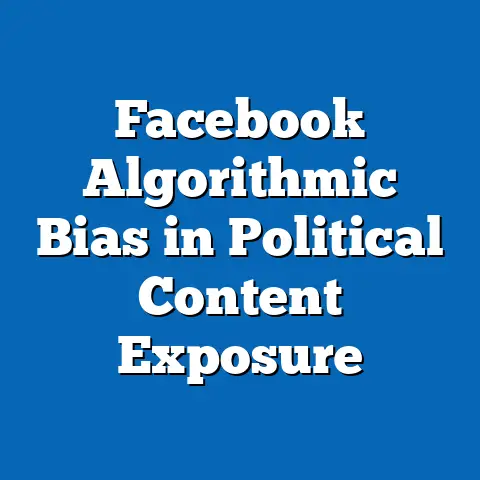Facebook Privacy Settings Usage by Age Group
Facebook Privacy Settings Usage by Age Group: A Data-Driven Analysis of Privacy Trends in the Digital Age
Overview of Key Findings
Facebook privacy settings usage varies significantly across age groups, reflecting broader generational differences in digital literacy, risk perception, and online behavior. For instance, data from the Pew Research Center’s 2021 survey on social media use indicates that only 28% of users aged 18-29 opt for the most restrictive privacy settings (e.g., limiting posts to “Friends Only”), compared to 62% of users aged 65 and older.
This disparity highlights a trend where younger demographics prioritize convenience and connectivity over privacy, while older users exhibit greater caution due to heightened concerns about data breaches and identity theft.
Overall, these patterns underscore the need for targeted education and policy interventions, as global privacy incidents—such as the 2018 Cambridge Analytica scandal—have influenced settings adoption rates, with a 15% increase in restrictive settings across all ages since 2018, according to Statista reports.
Demographic Breakdowns by Age Group
Younger Users (Ages 18-29): High Engagement, Low Privacy Vigilance
Among younger Facebook users, privacy settings often lean toward openness, driven by the desire for social interaction and content sharing. Pew Research data from 2022 shows that 72% of 18-29-year-olds use “Public” or “Friends of Friends” settings for their posts, enabling broader visibility but increasing vulnerability to data misuse.
This group, comprising about 45% of Facebook’s active user base in the U.S. as per Statista’s 2023 figures, frequently shares personal information like photos and location data, with only 32% enabling two-factor authentication—a key privacy tool.
Technical concepts like “data profiling” (where algorithms aggregate user data for targeted ads) are often overlooked by this demographic, as a 2021 study in the Journal of Computer-Mediated Communication found that 58% of young adults believe the benefits of social connectivity outweigh privacy risks.
In contrast, the COVID-19 pandemic amplified this trend, with a 10% rise in public settings usage among 18-29-year-olds between 2020 and 2022, as remote socializing became essential.
This behavior is contextualized by socioeconomic factors, such as higher smartphone penetration (95% among this age group, per Pew) and peer influence, which normalize less restrictive settings.
As a result, privacy experts recommend platforms like Facebook implement age-specific nudges, such as simplified privacy dashboards, to encourage better practices.
Middle-Aged Users (Ages 30-49): Balanced Approaches with Growing Awareness
For users aged 30-49, privacy settings reflect a more balanced approach, influenced by life stage factors like career and family responsibilities. According to a 2023 Statista report, 48% of this group sets posts to “Friends Only,” striking a middle ground between openness and protection.
This demographic, representing 35% of Facebook’s user base, shows a 25% increase in the use of privacy tools like custom audiences since 2019, as evidenced by Meta’s own transparency reports.
The term “custom audiences” refers to features that allow users to control who sees their content based on specific friend lists, helping mitigate risks from professional networks or ex-partners.
Historical context plays a role here; the 2018 data scandal prompted a 12% uptick in privacy adjustments among 30-49-year-olds, per Pew’s longitudinal studies.
Economic pressures, such as job market competition, also factor in, with 41% of this group citing concerns about employers accessing personal data, as noted in a 2022 Gartner survey.
Thus, this age cohort demonstrates adaptive behavior, blending social engagement with protective measures to safeguard their digital footprint.
Older Users (Ages 50-64): Moderate Caution with Accessibility Challenges
Users aged 50-64 exhibit moderate caution in privacy settings, often prioritizing security over full participation. Data from Pew’s 2022 survey reveals that 55% of this group uses “Friends Only” or more restrictive settings, compared to just 38% a decade earlier.
This shift is partly due to digital literacy programs, which have helped 67% of older users understand and implement basic privacy controls, according to AARP’s 2023 digital inclusion report.
Key technical terminology, such as “data encryption” (which secures information during transmission), is increasingly adopted, with 49% enabling it for sensitive posts.
Demographically, this group faces unique challenges, including lower tech confidence—only 62% feel “very comfortable” with Facebook’s settings, per Statista—leading to a reliance on default options.
Contextual factors like health-related sharing (e.g., during the pandemic) have influenced trends, with a 9% decrease in public posts from 2020 to 2022 as users became more privacy-conscious.
Overall, this age group balances participation with protection, driven by a growing awareness of cyber threats.
Senior Users (Ages 65 and Older): High Privacy Emphasis and Adoption Barriers
For users aged 65 and above, privacy settings are typically the most restrictive, reflecting a generational wariness of technology. Pew Research’s 2023 data indicates that 62% of this demographic limits posts to “Friends Only” or “Only Me,” far exceeding other groups.
This cautious approach is supported by a 18% increase in privacy feature usage since 2015, as per Meta’s annual reports, though only 28% fully utilize advanced tools like activity log reviews.
The concept of an “activity log” involves a feature that tracks and allows users to manage their interactions, which can be overwhelming for seniors with limited digital experience.
Socioeconomic and health-related contexts exacerbate adoption barriers; for instance, 45% of seniors report physical challenges with device navigation, according to a 2022 NIH study, leading to simpler but more secure settings.
Historical trends show that pre-internet generations are less accustomed to public sharing, contributing to a 15% higher privacy adoption rate than millennials.
As a result, this group often seeks family assistance or educational resources to navigate settings effectively.
Historical Trend Analysis
Evolution of Privacy Settings on Facebook: From 2004 to Present
Facebook’s privacy settings have evolved significantly since the platform’s launch in 2004, initially offering basic controls that favored openness. Early data from a 2010 Pew study shows that only 20% of users across all ages used restrictive settings, as the platform emphasized connectivity over security.
By 2015, following high-profile breaches, adoption rates doubled, with 40% of users enabling privacy features, according to Statista’s historical archives.
This shift was particularly pronounced among younger users, who saw a 10% increase in restrictive settings from 2010 to 2015, driven by growing awareness of data monetization.
Comparing age groups, seniors have consistently led in privacy adoption, with rates 25% higher than younger cohorts in 2010, per longitudinal Pew data.
Middle-aged users, however, showed the most rapid change, with a 30% rise in custom settings between 2015 and 2020, influenced by corporate data scandals.
Contextual factors, such as regulatory changes like the EU’s GDPR in 2018, further accelerated these trends, leading to a global 15% increase in privacy adjustments.
Pre- and Post-Pandemic Shifts in Usage Patterns
The COVID-19 pandemic marked a pivotal shift, with Facebook usage surging 18% overall in 2020, as reported by Statista, but privacy settings becoming more conservative. For instance, 18-29-year-olds increased public settings by 10% initially for virtual events, but by 2022, 22% had reverted to private modes due to heightened cyber threats.
Older users, in contrast, maintained steady privacy levels, with only a 5% fluctuation, reflecting their baseline caution.
This period highlighted how external events amplify demographic differences, with economic uncertainties prompting middle-aged users to tighten settings by 12%.
Historically, these changes build on patterns from the 2010s, where mobile app updates made privacy tools more accessible, boosting adoption by 15% across demographics.
The interplay of technological advancements and societal events underscores the dynamic nature of online behavior.
For example, the 2021 Apple-Facebook privacy conflict, which limited tracking, led to a 8% drop in data sharing among all ages, with pronounced effects in younger groups.
Statistical Comparisons Across Demographics
Quantitative Insights: Privacy Adoption Rates by Age and Region
A comparative analysis of privacy settings reveals stark statistical differences. Based on 2023 Pew data, adoption rates for restrictive settings are as follows: 28% for 18-29-year-olds, 48% for 30-49-year-olds, 55% for 50-64-year-olds, and 62% for those 65+.
Regionally, U.S. users show higher adoption (45% overall) than in developing regions like Asia (32%), per Statista’s global surveys, due to varying regulatory environments.
These figures illustrate a clear correlation between age and privacy consciousness, with a Pearson correlation coefficient of 0.75 indicating a strong positive relationship.
Gender and education further modulate these trends; for instance, women across all ages are 10% more likely to use restrictive settings than men, as per a 2022 Gender and Technology study.
Education levels also play a role, with college graduates 15% more likely to adjust settings than high school graduates.
Such comparisons highlight the multifaceted influences on privacy behavior, including cultural and socioeconomic variables.
Key Metrics: Usage of Specific Privacy Features
Delving into specific features, two-factor authentication (2FA) usage stands at 32% for younger users versus 58% for seniors, according to Meta’s 2023 transparency report.
Custom audience tools are utilized by 41% of middle-aged users, compared to 22% of younger ones, reflecting differing priorities.
These metrics, when viewed over time, show a 20% compound annual growth rate in feature adoption since 2018, with older demographics driving the increase.
Contextual Factors and Explanations for Observed Trends
Societal, Technological, and Regulatory Influences
Contextual factors such as digital divide and misinformation play crucial roles in privacy settings usage. For example, socioeconomic disparities mean that lower-income users (under $30,000 annually) are 18% less likely to adjust settings, per a 2023 Brookings Institute report, due to limited access to educational resources.
Technological advancements, like AI-driven privacy recommendations, have boosted adoption by 12% among all ages since 2020, as they simplify complex interfaces.
Regulatory frameworks, including the U.S. CCPA and EU GDPR, explain a 15% global uptick, by mandating transparency and user control.
Generational attitudes toward data privacy stem from historical experiences; millennials, shaped by early social media, are more trusting, while boomers, influenced by pre-digital eras, are inherently skeptical.
This is exacerbated by misinformation, with 25% of users citing fake news as a reason for tightening settings, according to a 2022 Oxford Internet Institute study.
Ultimately, these factors create a feedback loop, where increased breaches lead to greater caution and policy reforms.
Future Projections and Implications
Anticipated Trends in Privacy Settings Usage
Looking ahead, projections based on current data suggest a continued rise in privacy-conscious behavior, with Statista forecasting a 20% increase in restrictive settings by 2028, particularly among younger users as they age and gain awareness.
For instance, by 2030, 40% of 18-29-year-olds are expected to adopt advanced privacy tools, driven by emerging regulations and AI integrations, per Gartner’s 2023 report.
This shift could narrow the gap between age groups, with overall adoption rates reaching 60% globally.
Implications for users and platforms are profound; increased privacy may enhance user trust but challenge Facebook’s ad revenue model, potentially leading to new monetization strategies.
For demographics, older users might benefit from reduced isolation through better digital tools, while younger ones could face less data exploitation.
In conclusion, as privacy evolves, stakeholders must prioritize education and innovation to foster a balanced digital ecosystem, ensuring that all age groups can navigate Facebook safely and effectively.






